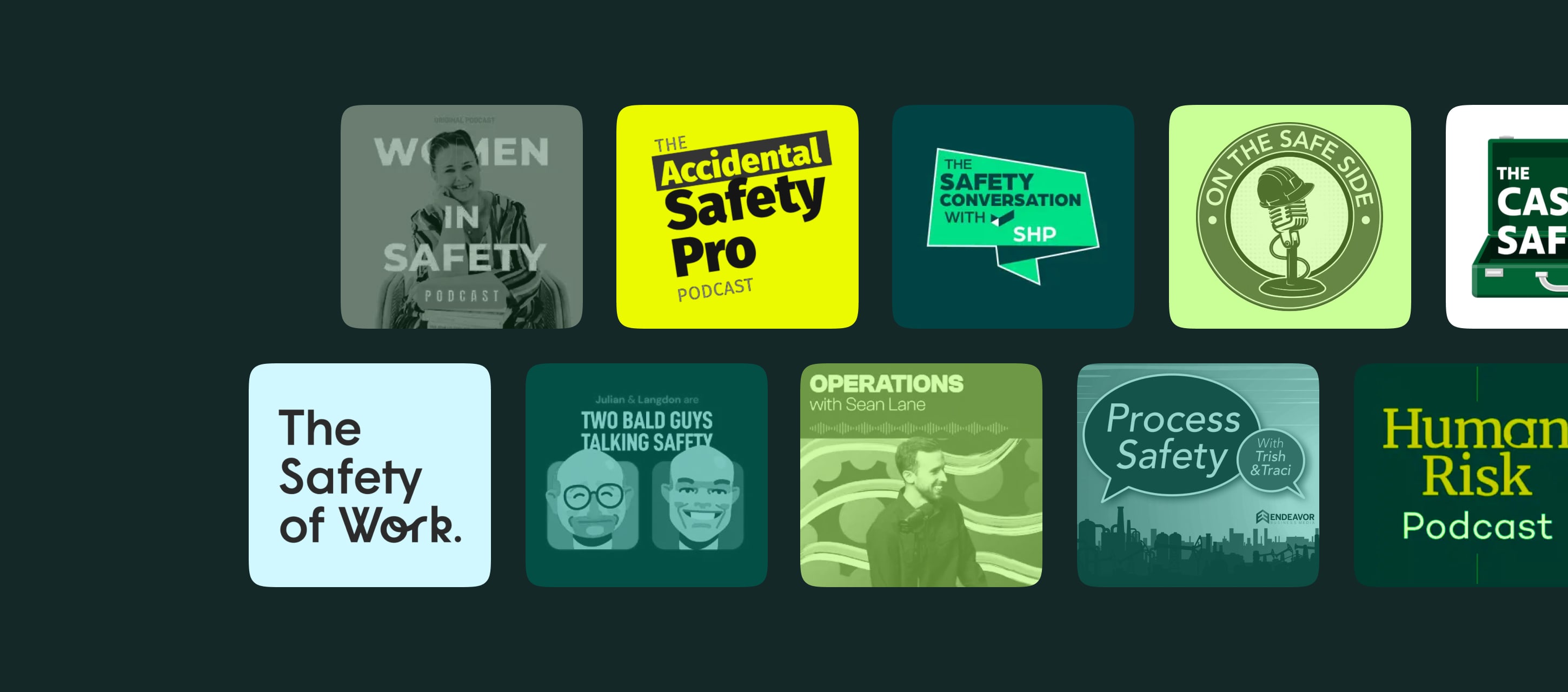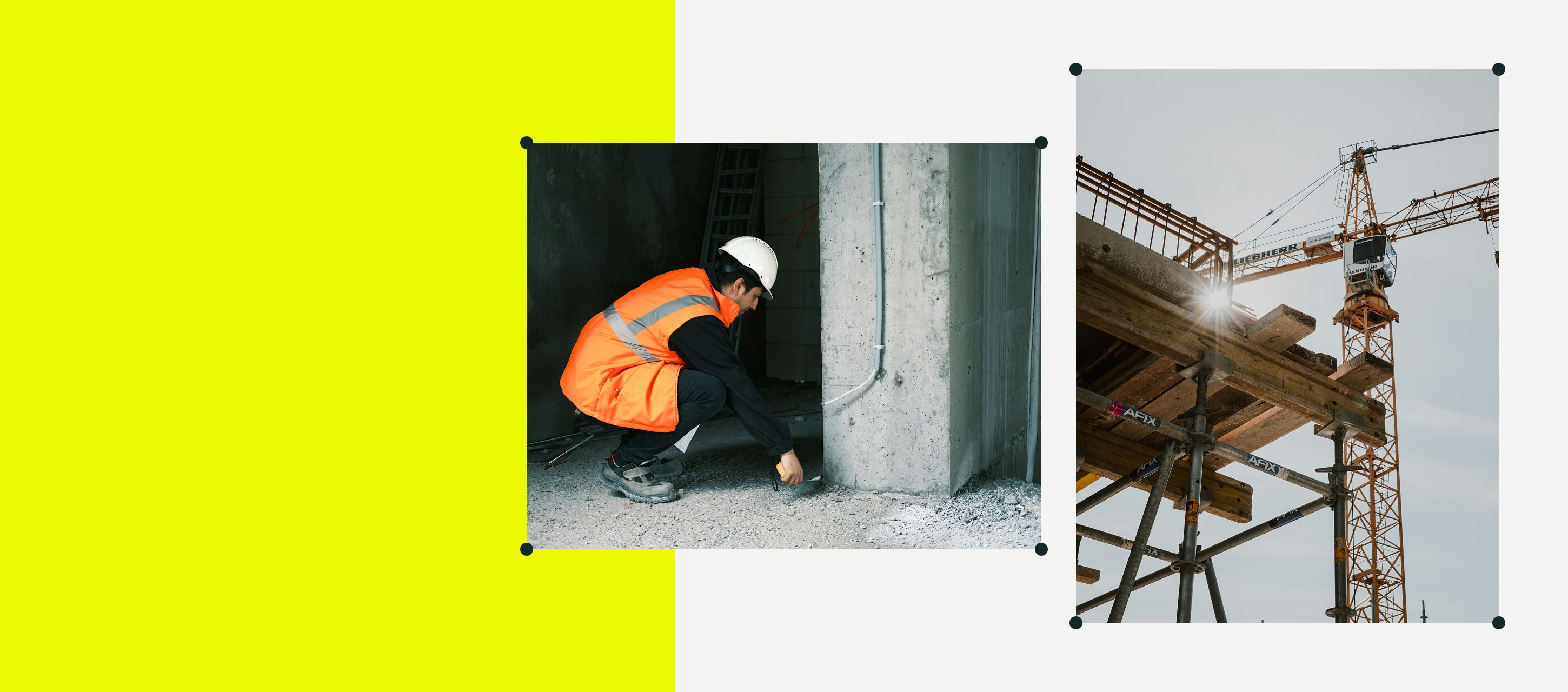Safety hazards can take many forms, from physical dangers to psychological risks. Identifying these threats is the first step in preventing injuries and building a resilient workplace.
Whether you’re using safety protocols or benefiting from workplace safety management software, addressing hazards requires a comprehensive approach.
Let’s break down the different types of safety hazards, provide real-world examples, and explore strategies to prevent them.
Contents:
What Is a Safety Hazard?
A safety hazard is any unsafe working condition that causes injury, illness, or death. Hazards typically vary depending on injury and project.
OSHA standards provide an excellent baseline for hazard prevention. Still, you must assess your company’s processes and environment to ensure there is a plan and accounting of all hazards, especially industry-specific ones. Failing to identify or recognize hazards is one of the root causes of workplace injuries, according to OSHA.
Types of Safety Hazards
If a company wants to improve workplace safety, it must recognize its role and responsibility in establishing a safety culture. A key part of this is understanding and addressing the various types of hazards that can arise in the workplace.
These hazards typically fall into six main categories:
- General Safety Hazards
- Ergonomic Hazards
- Physical Hazards
- Psychological Hazards
- Chemical Hazards
- Biological Hazards
1. General Safety Hazards
General safety hazards are general physical risks encountered in the workplace.
The general safety category includes the most common hazard types, and it refers to unsafe working conditions that may lead to illness, injury, or death. Some safety hazard examples include:
- Tripping or slipping hazards (spilled liquids, loose cords, blocked aisles)
- Working from raised areas (ladders, roofs, scaffolding)
- Moving machinery parts or unguarded machinery
- Electrical hazards (improper wiring, missing ground pins, frayed cords)
- Working in confined spaces
The safety hazards on this list can cause additional hazards. For example, a person transporting chemicals may face further chemical exposure in a slip-and-fall injury, especially if protective equipment gets damaged in the fall.
Read More Read More Top SafetyCulture alternatives for safety leaders in 2026
2. Ergonomic Hazards
Ergonomic hazards are physical conditions in the workplace that can cause injury or health issues.
Ergonomic hazards are often hidden threats to your workforce. Injuries occur slowly, often through repetitive motions and sustained awkward or static postures. Some common causes of ergonomic hazards are:
- Heavy lifting, pushing, or pulling
- Repeating the same tasks over and over
- Repetitive bending, twisting, reaching, or crouching
- Vibrations from power tools or machinery
The threat to physical health often stems from poor workstation design and improper body mechanics. Consider cases of a data entry clerk developing carpal tunnel syndrome from years of repetitive typing or a warehouse worker suffering lower back pain because of incorrectly lifting boxes or lacking proper support.
3. Physical Hazards
Physical hazards include environmental factors that may cause immediate or long-term harm.
Unlike ergonomic hazards, physical hazards are among the most prolific and identifiable risks in the workplace. The hazards encompass a wide range of environmental factors and include:
- High exposure to sunlight or UV rays
- Incessant loud noises
- Ionizing and nonionizing radiation (EMFs, radio waves, microwaves)
- Temperature extremes (cold or hot)
4. Psychological Hazards
Psychological hazards include insidious threats to well-being, such as stress, anxiety, and burnout.
A psychological hazard in the workplace is not as evident as physical threats or other risks. The hazards are often intangible, resulting in emotional turmoil. Some examples of psychological hazards include:
- Bullying and harassment
- Lack of role clarity and support
- Interpersonal conflict
- Traumatic events
- Unfair treatment and poor organizational justice
5. Chemical Hazards
Chemical hazards are potentially toxic or irritating substances that can harm a person’s health.
While chemicals are integral to many industries, they can pose a significant risk to worker health. To avoid the safety hazards of chemicals, a company must understand the types of chemicals and their potential effects:
- Carcinogens: Carcinogens are substances that cause cancer with long-term exposure.
- Corrosives: Corrosives can cause severe burns and tissue damage.
- Explosive and flammable chemicals: These substances pose fire and explosion risks, resulting in burns, death, and property loss.
- Reactive Chemicals: When mixed with incompatible chemicals, reactive chemicals can become volatile, release toxic fumes, or cause explosions.
- Toxins: Toxins can cause immediate or long-term harm to the body, including death.
- Sensitizers: After repeated exposure, sensitizers can cause allergic reactions, including severe and life-threatening anaphylactic shock.
Depending on the composition of chemicals, they can enter the body through inhalation, skin contact, ingestion, or injection (accidental puncture with a needle or sharp object).
6. Biological Hazards
Biological hazards or biohazards stem from exposure to living organisms or their byproducts that may cause adverse health effects.
These safety hazards are particularly prevalent in agriculture, healthcare, research, and waste management sectors. Common biological hazards include:
- Bacteria
- Biological toxins
- Fungi
- Parasites
- Prions
- Viruses
Exposure to biohazards typically occurs in one of several ways: animal bites and scratches, direct contact, ingestion, inhalation, or sharp injuries.
Read More Read More The Ops Manager’s Guide to the Top 10 Job Safety Analysis Tools
5 Ways to Prevent Safety Hazards
Avoiding workplace safety hazards is more than reacting to injuries and filling out the incident report; it is also about adopting a proactive approach to safety. Safety management requires a three-step approach to hazard identification and training.
1. Risk Assessment
Risk Assessment Method Statement (RAMS) is a framework for identifying and assessing risks to determine control measures.
A safety audit or thorough risk assessment is the cornerstone of an effective safety program, and it involves a systemic approach to identifying, analyzing, and evaluating hazards in the workplace. The audit should include walkthrough inspections, a thorough review of existing incident reports, and employee input.
Companies can use a RAMS template to help identify and evaluate hazardous tasks. The document helps define the work and specific risks involved. RAMS are most common in the construction field.
Risk assessments are not a one-and-done project. Companies must continuously reassess hazards, updating them as the environment changes, including when introducing new equipment or implementing new procedures.
2. More Attention to Preventing Psychological Hazards
Your company can reduce the risks of psychological hazards by fostering an environment of open safety communication and offering resources and support for mental wellness.
You can also consider promoting a healthy work-life balance and adopting a zero-tolerance policy for harassment or bullying. Psychological safety is crucial to a health and safety strategy. By prioritizing psychological health, employers reap the rewards of a more engaged, innovative, and resilient workforce.
3. Education and Training
Finally, a robust education and training program is essential to maintaining and promoting safety awareness and data-driven safety. Training and education provide insight into:
- Emergency procedures
- Hazard recognition
- Regulatory compliance
- Safe work practices
- Safety controls
Effective training is interactive and engaging; it provides a tailored approach to specific environments and industries. Also, education includes access to documentation and modules. Employees will need ongoing access and programs to ensure staff employ current safety practices.
Read More Read More Siemens Gamesa reduces the training completion time using digital checklists
4. Hazard Control Hierarchy
The hazard control hierarchy is a decision-making framework for safety management. It goes beyond the standard safety report and focuses on organizing methods for controlling workplace hazards in order of effectiveness.
A key tool in applying this framework effectively is the hazard identification checklist, which helps pinpoint risks that can then be addressed using the hierarchy’s five componentsThere are five components of the hierarchy:
- Elimination: The most effective control measure for safety hazards involves physically removing the hazard from the workplace.
- Substitution: When elimination is impossible, try replacing the hazard with a less dangerous option.
- Engineering controls: If elimination or substitution isn’t possible, use control to isolate the hazard from workers.
- Administrative controls: If all other options fail, change policies, practices, and schedules to minimize exposure.
- Personal protective equipment: While the least effective form of control, PPE provides workers with the gear to shield them from hazards.
A company should always strive for hazard control at the highest level to eliminate risks to workers. That said, hazard controls should be feasible without introducing additional hazards. In most situations, a company must adopt a combination of controls at multiple levels of the hierarchy.
5. Safety Protocols
When safety protocols are strong, your field teams work better and faster. Clean, organized, and hazard-free workplaces let your people focus on the job, not avoidable distractions like spills or misplaced equipment. How to get there?
Start with the essentials: clean as you go and maintain equipment regularly. Small tasks like mopping up spills, securing loose cables, and inspecting tools might seem routine, but they’re powerful first steps to prevent accidents like slips and falls.
Think about your exits. Can your team find their way out quickly in an emergency? Regularly check that exits are clearly marked, evacuation plans are updated, and fire alarms are in good working order.
And where do you keep hazardous materials? If the answer is “wherever there’s space,” it’s time to rethink that. Designated, well-labeled storage areas for chemicals and other risks not only improve safety but also make inventory checks faster, keeping your team on track.
How Fluix Can Help You Manage Safety Hazards
Fluix is a field productivity tool that simplifies safety management by putting powerful tools right in your team’s hands.
- Digital Safety Checklists. With Fluix, you can create, update, and share digital safety checklists in real time. And your team can access and complete it on any device – even offline.
- Incident Reporting. Report incidents directly from the field with photos, videos, and notes. Managers receive instant notifications, allowing them to respond faster and implement corrective measures right away.
- Centralized Safety Documentation. Fluix’s centralized document storage ensures that your team always has the latest version, eliminating confusion and reducing compliance risks.
- Reports. Whether it’s tracking the most common hazards or analyzing incident trends, these insights help you make smarter, data-driven decisions.
Fluix can be more than an app – it’s your partner in creating safer, more efficient operations. By combining digital tools like checklists, workflows, and real-time reporting, Fluix helps you manage safety hazards without breaking stride.







